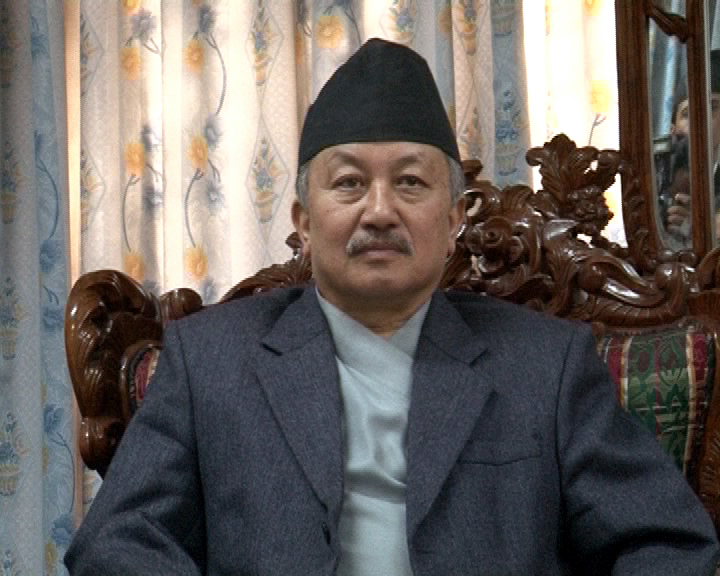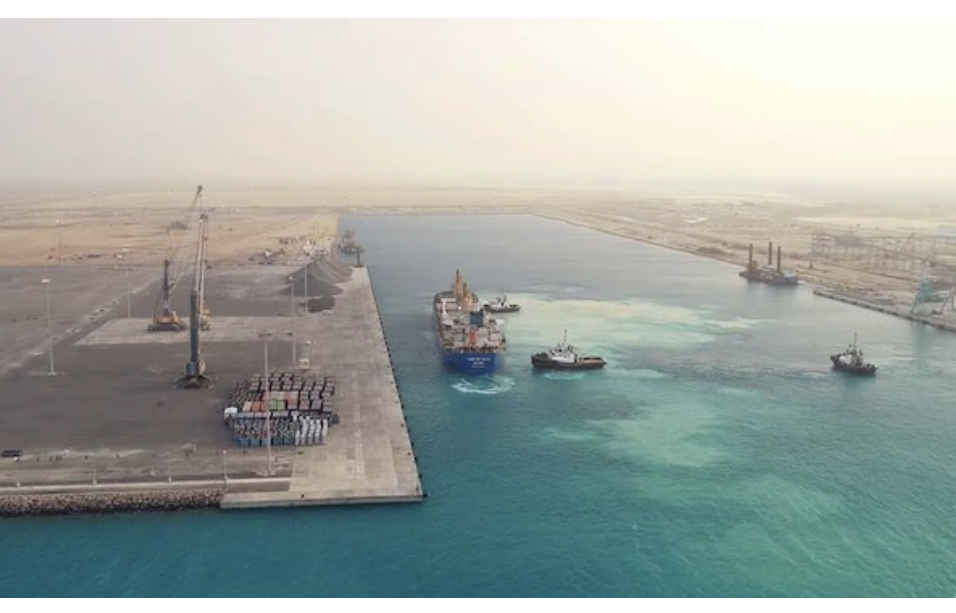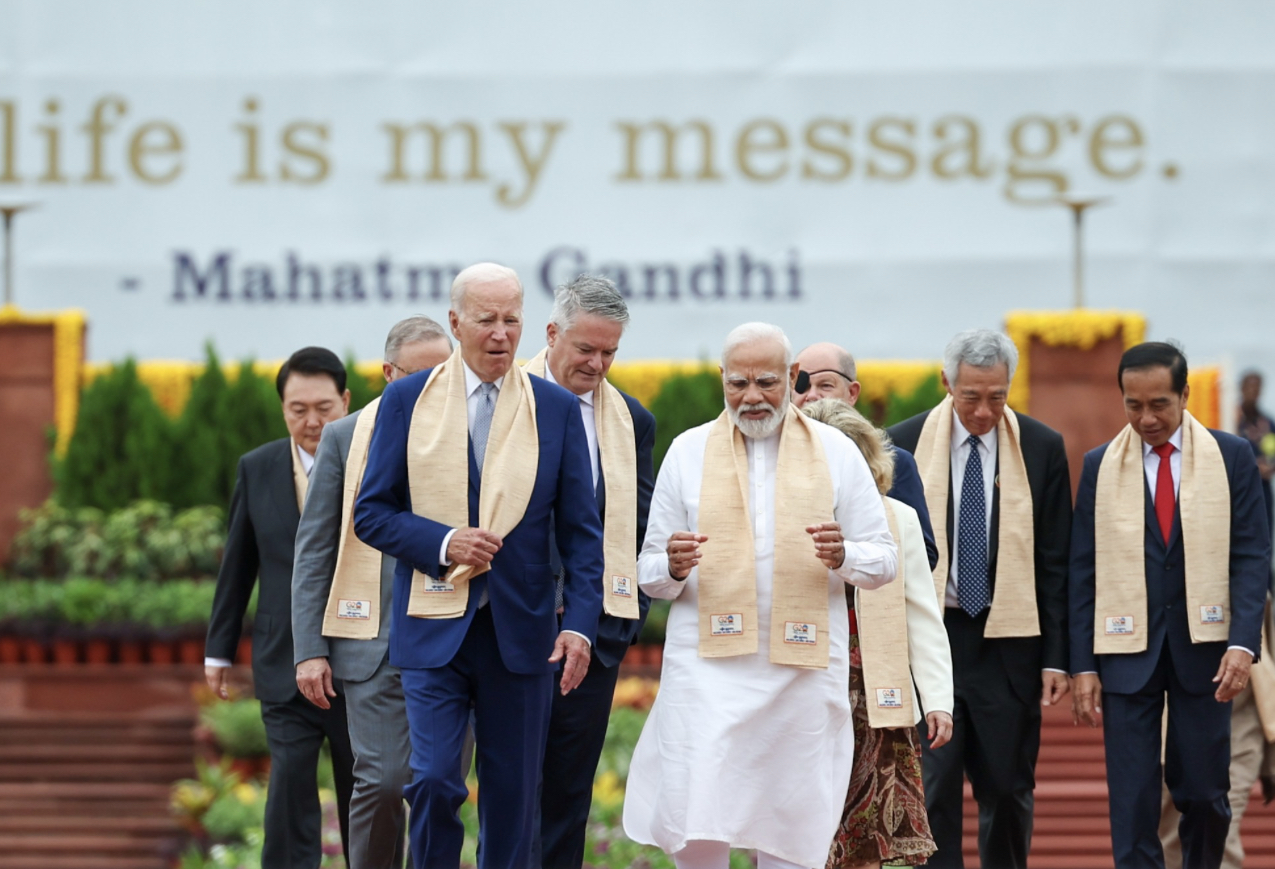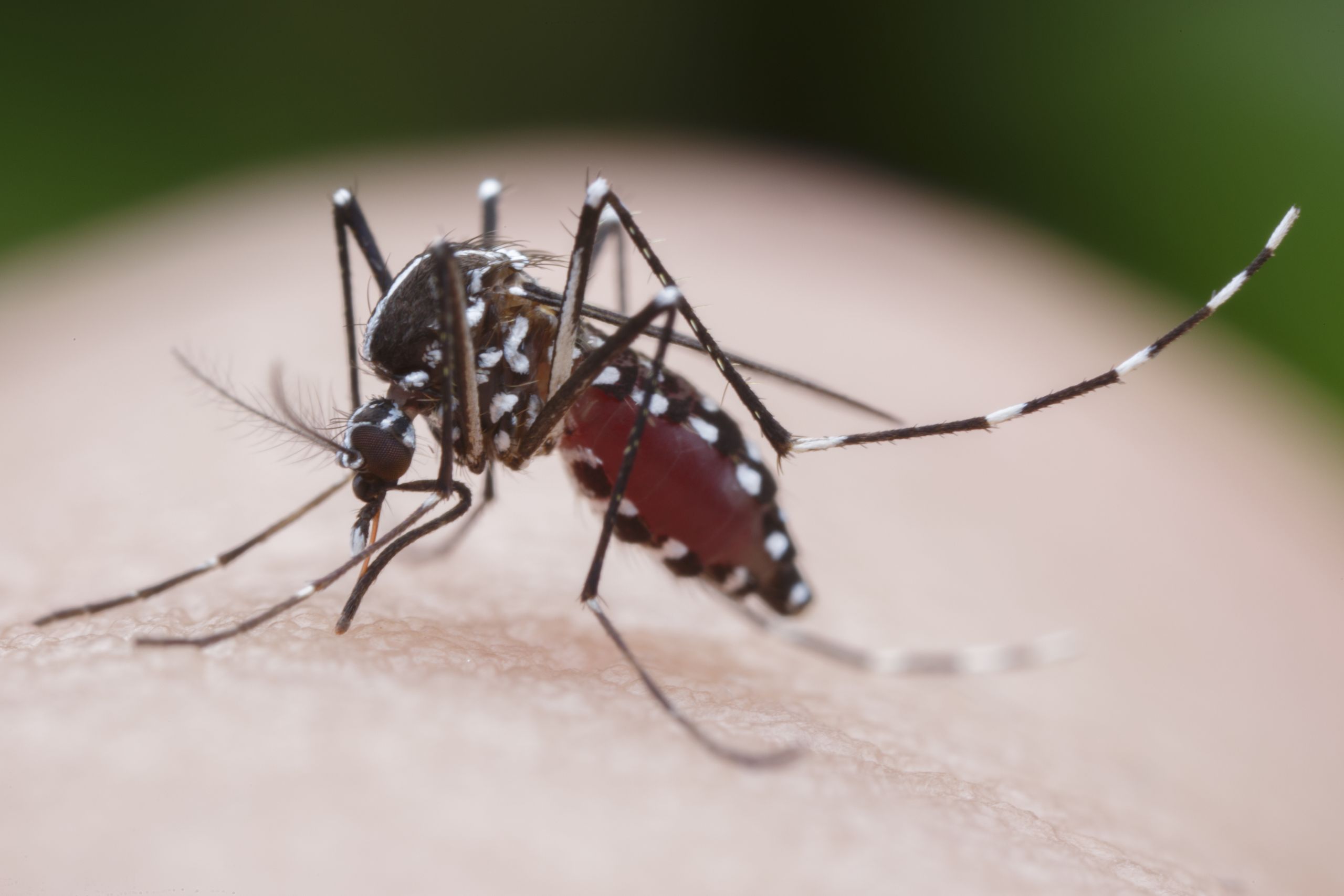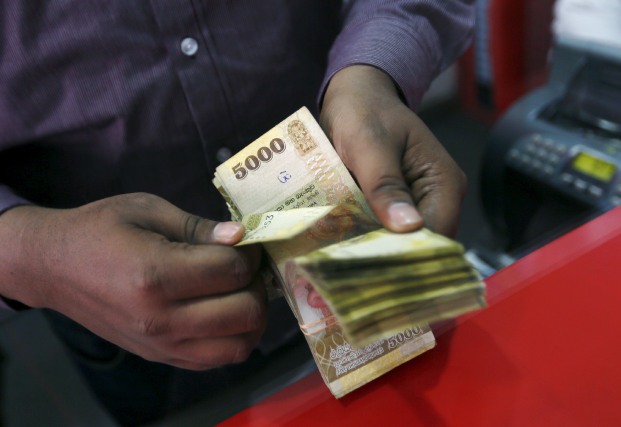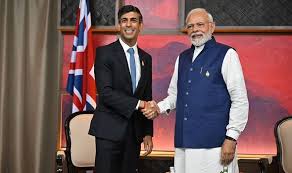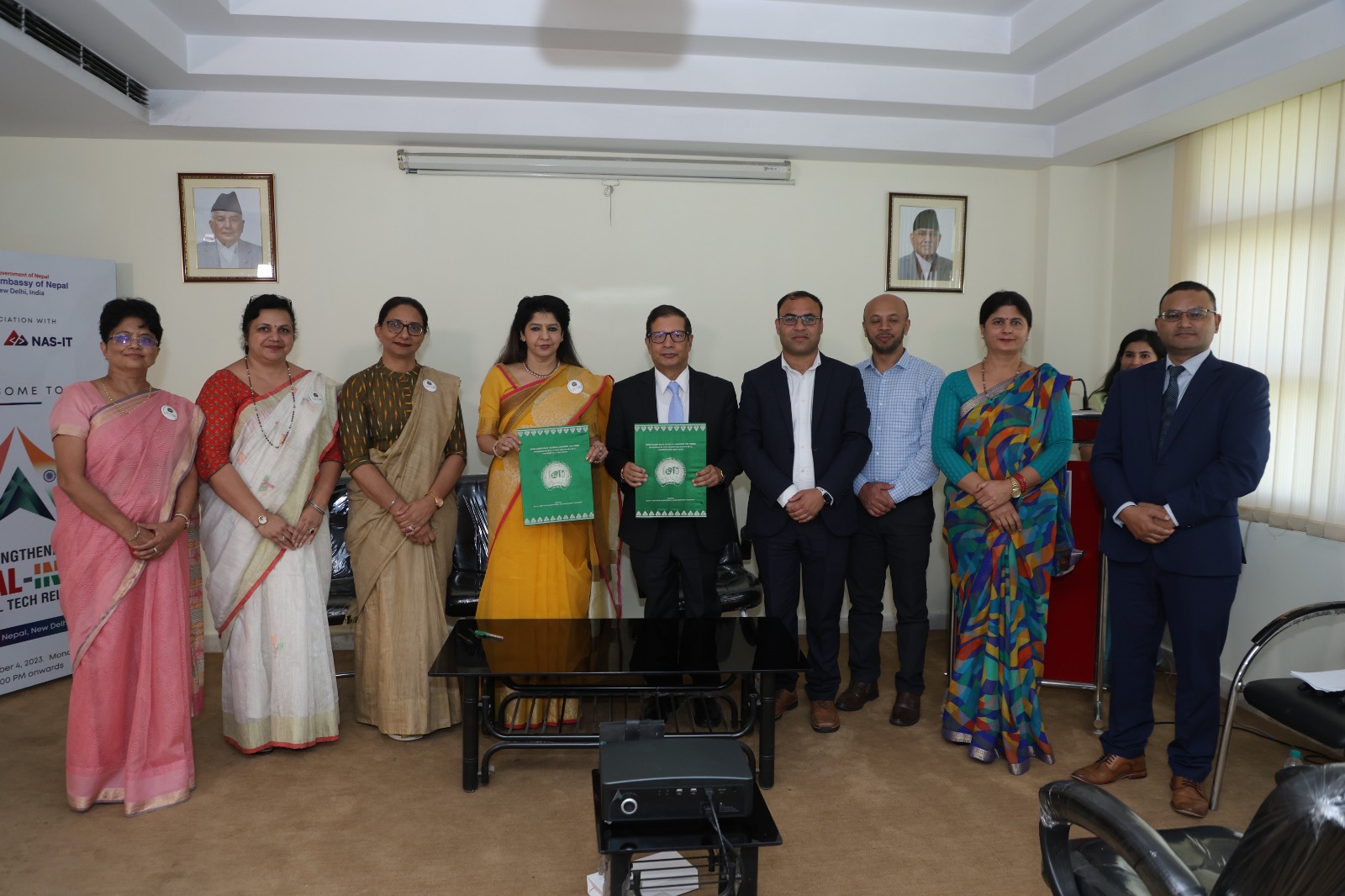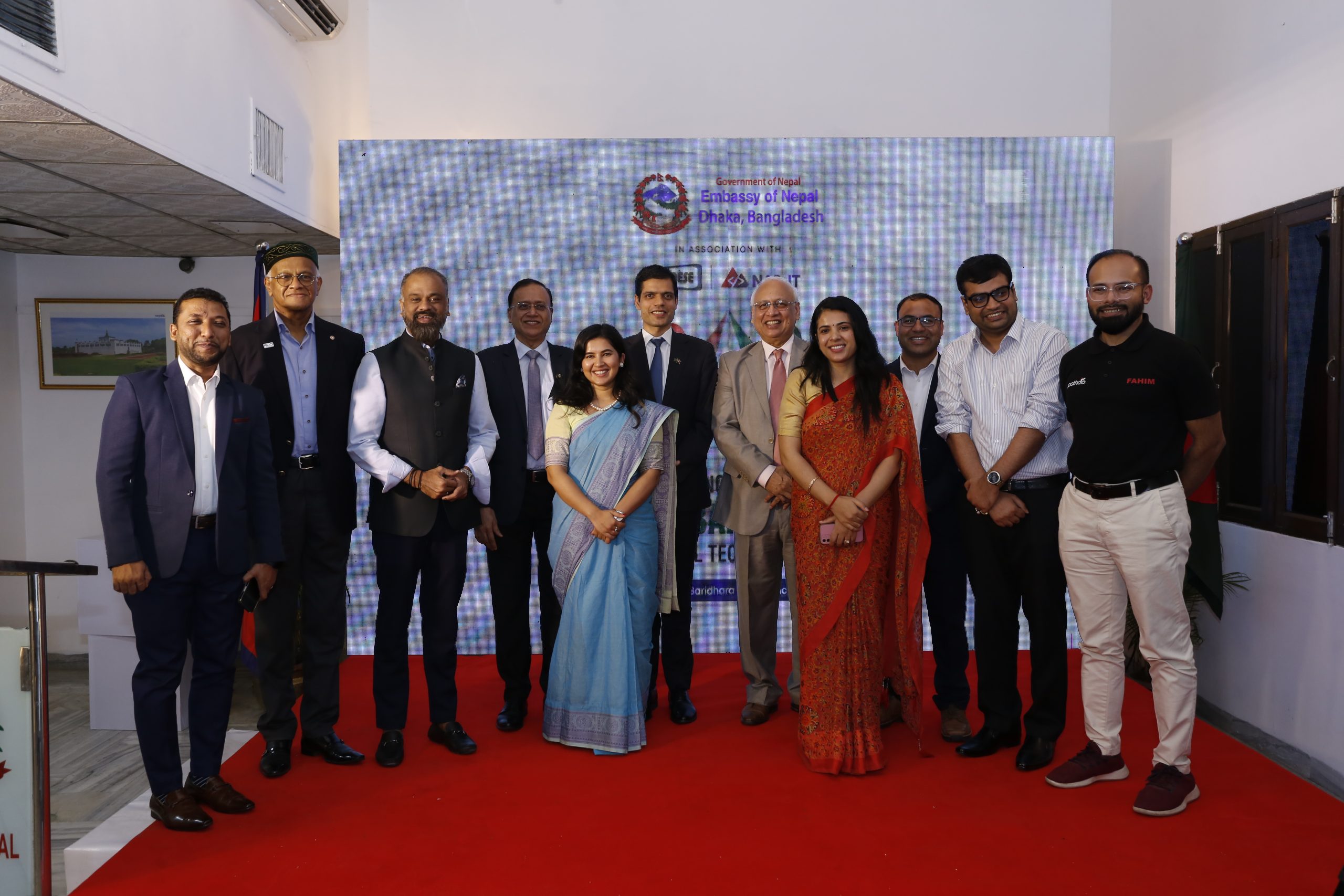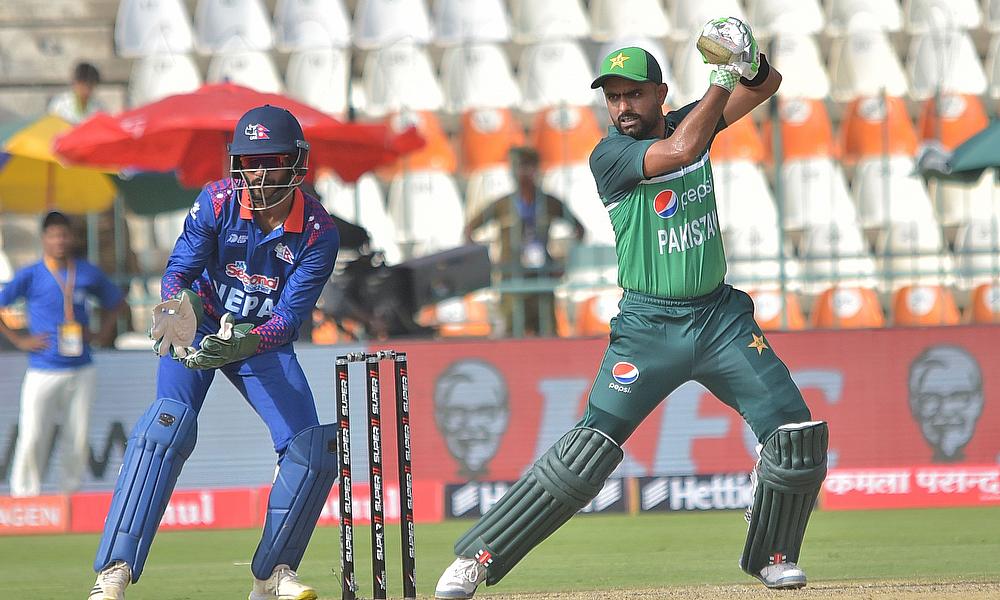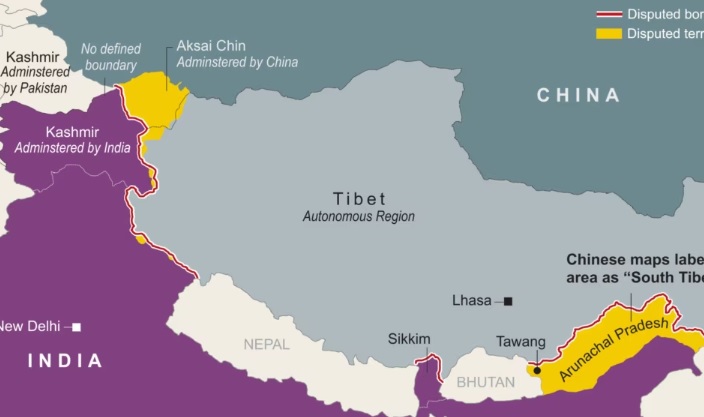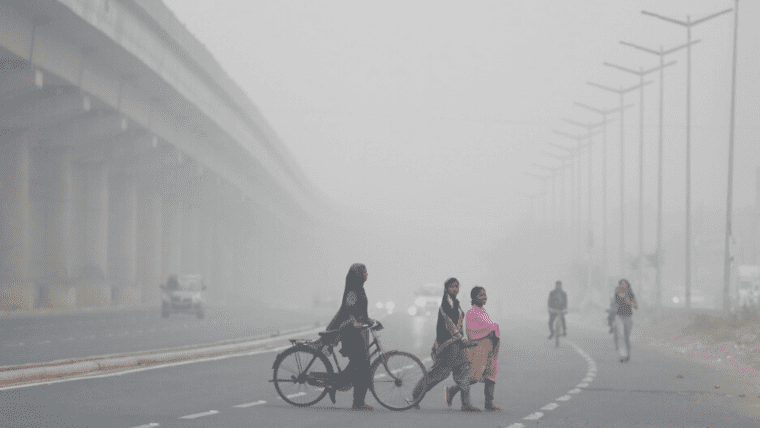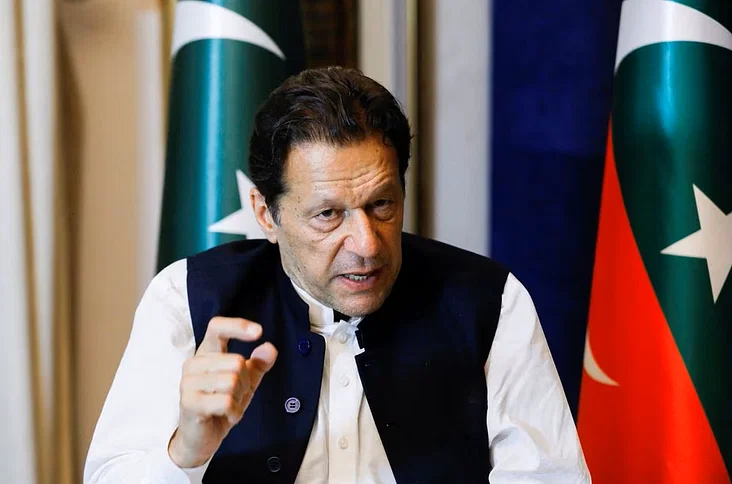Dhaka – Nepali and Bangladeshi officials, IT professionals and business leaders have emphasized on the need to promote cooperation in the IT sector between the two countries.
Addressing the event entitled “Strengthening Nepal-Bangladesh Bilateral Tech Relations” in Dhaka on Thursday, Ambassador of Nepal to Bangladesh, Ghanshyam Bhandari, said that Nepal’s booming IT sector was generating numerous career opportunities, promoting innovation and entrepreneurship, and contributing to the overall economic growth of the country. The development of the sector is driving innovation and digital transformation across various areas, such as healthcare, education, tourism, and finance, he said.
Ambassador Bhandari quoted a recent study conducted by Kathmandu-based IIDS that estimated IT service export industry in Nepal at approximately 515 million USD in 2022, representing an outstanding growth of 64.2% compared to 2021. The IT industry is attracting international clients, leading to an increase in the country’s exports of IT products and services. With the right investments in education, training, and infrastructure, Nepal’s IT industry is poised to create up-and-coming employment opportunities in cloud computing, artificial intelligence, and cyber security among others, he said.
“It is heartening to see that Nepal-Bangladesh partnership in the field of technology has been growing steadily. For instance, Pathao, a ride-hailing platform that began its journey in Bangladesh, has changed how people commute in Kathmandu after its launch in 2018,” said Ambassador Bhandari. “IT companies like Genese Solution have been offering enterprise solutions to business houses in Bangladesh. Lately, there has been an increasing interest of investors and entrepreneurs from Bangladesh to explore new avenues in this area,” he added.
‘Unique opportunity to enhance cooperation’
Addressing the event as a Chief Guest, Secretary at the Department of ICT in the Bangladesh Government, Md. Shamshul Arefin said that Nepal and Bangladesh have the unique opportunity to enhance cooperation in the IT sector. He said both countries enjoy excellent bilateral relationships and should explore avenues of partnership and knowledge exchange. Nepal’s burgeoning IT sector and Bangladesh’s innovative strides have prepared a fertile ground for collaboration that can yield mutually beneficial outcomes. Tech collaboration is not just about signing agreements; it is also about forging lasting relationships through research and development and knowledge sharing. “Let us foster an environment where curiosity thrives to bring about meaningful change to enhance the quality of life of our citizens,” he said.
Joint Secretary at the Ministry of Communication and Information Technology, Anil Kumar Dutta, said that the government of Nepal had already enacted the Electronic Transaction Act and was working on to introduce a new IT bill and the bill on cyber security. He said the Nepal government has approved the Digital Nepal Framework and was implementing the Digital Nepal Acceleration project. Saying that more than 600 IT companies were operating in the country, Mr Dutta stressed that the government was going to establish data centres in all seven provinces of Nepal. He said the government of Nepal was keen to collaborate with Bangladesh in areas like cybersecurity.
President of Bangladesh Association of Software and Information Services (BASIS), Russell T Ahmed, said that Bangladesh earned USD 30 million by exporting ICT services in 2009 when the Digital Bangladesh programme was announced. Today, Bangladesh earns over US 1.5 billion every year by exporting ICT services, he added. Stating that Bangladeshi companies now produce complete core banking solutions, Mr Ahmed said there was much room for collaboration between Nepal and Bangladesh. “We are in the same boat. Rather than competing, let us collaborate and grow together,” he said.
Fahim Ahmed, CEO at Pathao Inc., said that his company had expanded into Nepal and they see a great market potential. With the further support from the government of Nepal and partnership with local Nepali companies, we aim to expand in various other sectors like fintech, logistics and e-commerce, he said.
General Secretary of Nepal Association for Software and IT Services Companies (NAS-IT), Nirdesh Dwa, remarked that Nepali companies are getting more international exposure now. “There are cross-border opportunities for Nepali and Bangladeshi companies. We can learn from high-tech parks in Bangladesh and encourage collaboration between the private sector and academia,” he added.
Founder and Global CTO of Genese Solution, a UK-based digital solution company, highlighted the immense potential of Nepal’s IT service export industry that contributed to 1.4 percent of the country’s GDP and 5.5 percent of the foreign currency reserve in the last year, as per a recent study. The industry was valued at USD 308 million in 2020, which rose to over USD 515 million in 2022.
He suggested that Nepal and Bangladesh could promote tech collaboration in areas including digital infrastructure enhancement, e-governance solutions, digital education and skill development, healthcare transformation, cybersecurity solutions and innovation and research, among others.
Delivering vote of thanks, Deputy Chief of Mission at the Nepali embassy in Dhaka, Mrs Lalita Silwal, called uppn entrepreneurs from both the countries to seize the moment.
The event was organized by the Embassy of Nepal in Dhaka in collaboration with NAS-IT and Genese Solution Ltd.




